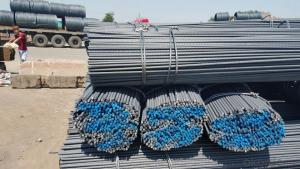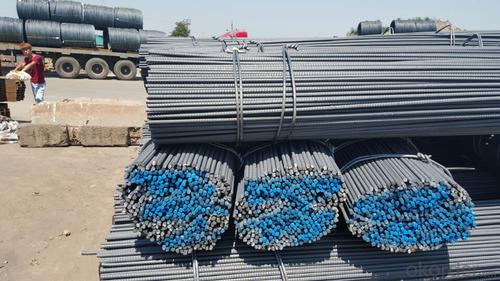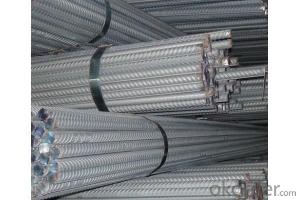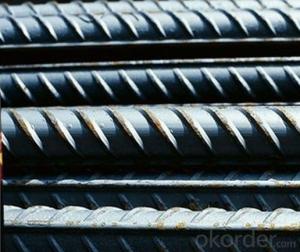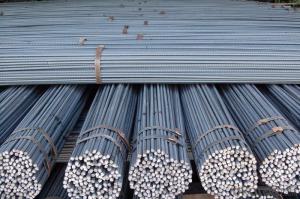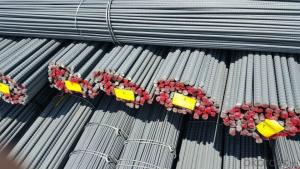Steel Reinforcing Rebars in Hign Quality
- Loading Port:
- China main port
- Payment Terms:
- TT OR LC
- Min Order Qty:
- 100 m.t.
- Supply Capability:
- 10000 m.t./month
OKorder Service Pledge
OKorder Financial Service
You Might Also Like
Product Description:
OKorder is offering Steel Reinforcing Rebars in Hign Quality at great prices with worldwide shipping. Our supplier is a world-class manufacturer of steel, with our products utilized the world over. OKorder annually supplies products to African, South American and Asian markets. We provide quotations within 24 hours of receiving an inquiry and guarantee competitive prices.
Product Applications:
Steel Reinforcing Rebars in Hign Quality are ideal for structural applications and are widely used in the construction of buildings and bridges, and the manufacturing, petrochemical, and transportation industries.
Product Advantages:
OKorder's Steel Reinforcing Rebars in Hign Quality are durable, strong, and wide variety of sizes.
Main Product Features:
· Premium quality
· Prompt delivery & seaworthy packing (30 days after receiving deposit)
· Can be recycled and reused
· Mill test certification
· Professional Service
· Competitive pricing
Product Specifications:
Manufacture: Hot rolled
Grade: HRB335,HRB400,HRB500
Certificates: ISO, SGS, BV, CIQ
Length: 6m – 12m, as per customer request
Packaging: Export packing, nude packing, bundled
Chemical composition (%): | C | Si | Mn | P | S | Ceq | |||
HRB335 HRBF335 |
0.25 |
0.80 |
1.60 |
0.045 |
0.045 | 0.52 | |||
HRB400 HRBF400 | 0.54 | ||||||||
HRB500 HRBF500 | 0.55 | ||||||||
Mechanical properties | Steel | Rel/ MPa | Rm/ MPa | A/ % | Agt/ % | ||||
≥ | |||||||||
HRB335 HRBF335 | 335 | 455 | 17 |
7.5 | |||||
HRB400 HRBF400 | 400 | 540 | 16 | ||||||
HRB500 HRBF500 | 500 | 630 | 15 | ||||||
FAQ:
Q1: what is the difference between actual weight and theoretical weight?
A1: All the section steel has two weights: actual weight and theoretical weight. Actual weight is the weighing out when the product delivered from the mill. Theoretical weight is calculated by pieces. The invoice can be based on each of them as your request.
Q2: How do we guarantee the quality of our products?
A2: We have established an advanced quality management system which conducts strict quality tests at every step, from raw materials to the final product. At the same time, we provide extensive follow-up service assurances as required.
Q3: How soon can we receive the product after purchase?
A3: Within three days of placing an order, we will arrange production. The normal sizes with the normal grade can be produced within one month. The specific shipping date is dependent upon international and government factors, the delivery to international main port about 45-60days.
Images:
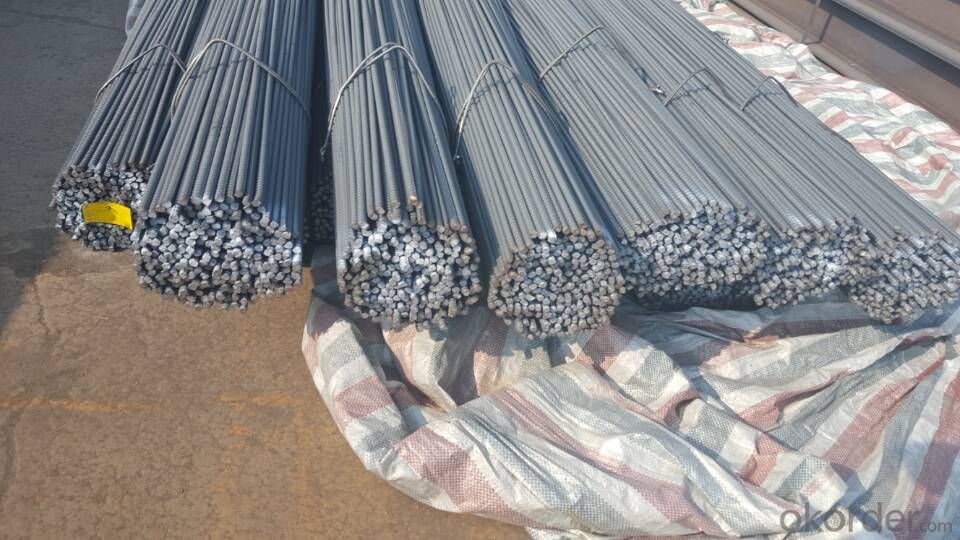
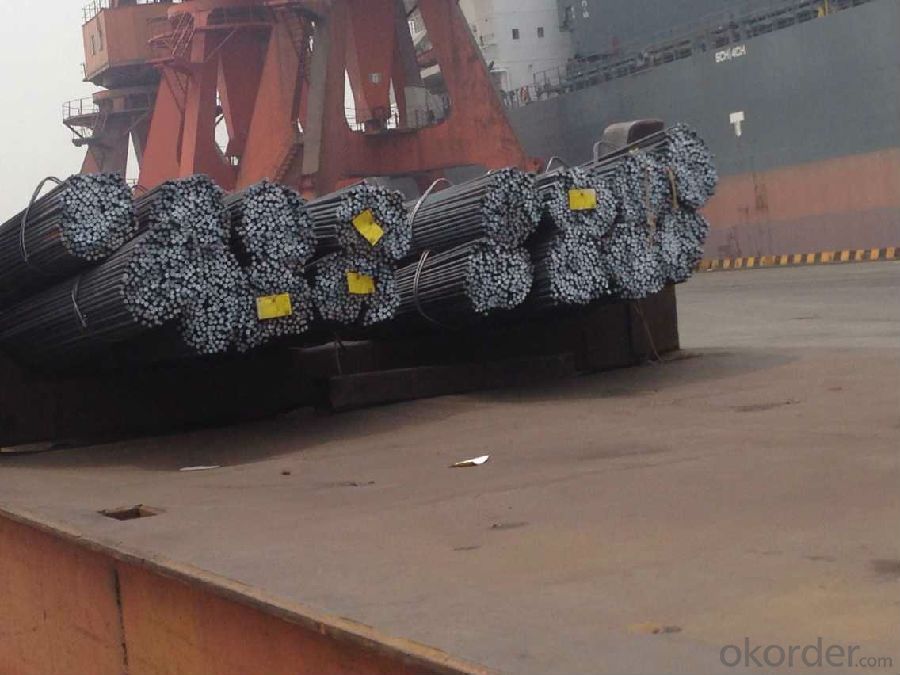
- Q: How do steel rebars reinforce concrete?
- Steel rebars reinforce concrete by providing additional strength and stability to the structure. When concrete is poured, it is strong in compression but weak in tension. Steel rebars are embedded within the concrete to counterbalance this weakness and enhance its tensile strength. The rebars act as a reinforcement by absorbing the tensile forces that occur when a structure is subjected to bending or stretching. When such forces are applied, the rebars distribute the load across the concrete, preventing cracks and failure. This is crucial in structures such as buildings, bridges, and dams, where the concrete needs to withstand various external forces. The rebars also help to control the expansion and contraction of the concrete due to temperature changes. Since steel has a similar coefficient of thermal expansion as concrete, it helps to minimize the stress that occurs due to temperature fluctuations, reducing the risk of cracking. Moreover, the bond between the steel rebars and the concrete is essential for effective reinforcement. The rough surface of the rebars provides an excellent grip with the surrounding concrete, ensuring that they work together as a composite material. This bond enables the transfer of stress from the concrete to the rebars, enhancing the overall strength and durability of the structure. In summary, steel rebars reinforce concrete by adding tensile strength, distributing loads, controlling temperature-induced stress, and creating a strong bond with the concrete. This combination of concrete and steel creates a reinforced concrete structure that can withstand various external forces and maintain its structural integrity over time.
- Q: How do steel rebars affect the overall sustainability of a structure?
- The overall sustainability of a structure is significantly influenced by steel rebars. To begin with, the utilization of steel rebars adds to the building's strength and durability, ensuring its longevity and decreasing the need for frequent repairs or replacements. As a result, the consumption of raw materials and energy required for construction is reduced, making the structure more sustainable. Moreover, steel rebars aid in improving the structural integrity of a building, rendering it more resilient to natural disasters like earthquakes and hurricanes. By enhancing the safety and resilience of the structure, steel rebars minimize the potential for damage and loss, thereby reducing the environmental impact associated with reconstruction and waste generation. Additionally, at the end of a building's life cycle, steel rebars can be recycled. Steel is highly recyclable, and the reuse of steel rebars significantly decreases the demand for virgin steel production and the related carbon emissions. Steel recycling also conserves natural resources and reduces landfill waste, making it a more sustainable alternative to using other materials. Furthermore, the incorporation of steel rebars in structures allows for greater design flexibility and adaptability. This implies that buildings can be easily modified or repurposed, reducing the necessity for demolition and reconstruction. The ability to repurpose existing structures reduces waste and energy consumption, contributing to the overall sustainability of the built environment. In conclusion, steel rebars have a positive impact on the overall sustainability of a structure through their durability, strength, and recyclability. By enhancing the longevity, safety, and adaptability of a building, steel rebars decrease the environmental impact associated with construction, maintenance, and demolition.
- Q: How do steel rebars improve the ductility of a structure?
- By reinforcing and resisting tension forces, steel rebars enhance the ductility of a structure. When external loads, like earthquakes or strong winds, are applied to a structure, it undergoes tensile stresses, which can result in cracking and failure. However, the inclusion of steel rebars, typically composed of high-strength steel, in concrete structures improves their capacity to withstand and distribute these forces. The presence of rebars in the concrete boosts its tensile strength, enabling it to withstand deformation and cracking. When the structure faces tension, the rebars bear the majority of the load, preventing the concrete from collapsing. This redistribution of forces leads to increased ductility, which refers to a material's ability to undergo deformation without breaking. Moreover, steel rebars also fortify the structural integrity of a building by hindering the propagation of cracks. As the concrete cracks under tension, the rebars act as a barrier, confining the growth of these cracks and preventing them from spreading throughout the structure. This containment of cracks enhances the overall resilience of the building, minimizing the risk of catastrophic failure. In conclusion, steel rebars are vital in enhancing the ductility of a structure by improving tensile strength, redistributing forces, and limiting crack propagation. By incorporating rebars into concrete, engineers can design and construct structures capable of withstanding various external forces, assuring the safety and longevity of the building.
- Q: How are steel rebars classified based on their diameter?
- Steel rebars are classified based on their diameter using a standardized system. The diameter of rebars is measured in millimeters and is denoted by a number. The most commonly used classification system for rebars is the "nominal diameter" system, where rebars are categorized into different sizes based on their diameter. The nominal diameter is expressed as a whole number, for example, 6, 8, 10, 12, etc. In this system, the nominal diameter represents the approximate diameter of the rebar in millimeters. For instance, a rebar with a nominal diameter of 8 has an approximate diameter of 8 millimeters. The diameter of rebars can range from as small as 6 millimeters to as large as 50 millimeters or more. It is important to note that the actual diameter of a rebar may vary slightly from its nominal diameter due to manufacturing tolerances. However, these variations are generally within an acceptable range. The classification of steel rebars based on their diameter is crucial in construction and engineering as it helps in determining the appropriate size and strength of rebars required for a specific application. Different diameters of rebars have different load-bearing capacities and are used accordingly in various structural elements such as beams, columns, slabs, and foundations. In summary, steel rebars are classified based on their diameter using a nominal diameter system, where the approximate diameter of the rebar is expressed as a whole number in millimeters. This classification aids in selecting the right size and strength of rebars for different construction purposes.
- Q: Can steel rebars be used in marine structures?
- Yes, steel rebars can be used in marine structures. Steel is a commonly used material in marine construction due to its strength, durability, and resistance to corrosion. However, it is important to use the appropriate type of steel rebars that are specifically designed for marine applications. These rebars are usually made of stainless steel or galvanized steel, which have enhanced corrosion resistance properties compared to regular carbon steel rebars. Additionally, an extra layer of protection such as epoxy coating or cathodic protection systems can be applied to further increase the rebars' resistance to corrosion in harsh marine environments. Regular maintenance and monitoring are also essential to ensure the long-term performance and integrity of steel rebars in marine structures.
- Q: Can steel rebars be used in the construction of religious buildings?
- Yes, steel rebars can certainly be used in the construction of religious buildings. Steel rebars are commonly used in construction projects to reinforce concrete structures, and religious buildings are no exception. The use of steel rebars helps enhance the structural integrity of the building, ensuring its durability and safety.
- Q: Can steel rebars be used in structures with high chemical resistance requirements?
- When considering structures with high chemical resistance requirements, it is important to take into account the specific chemical environment in which the structure will be exposed. Although steel rebars generally have resistance to many common chemicals, certain aggressive substances like acids or alkaline solutions can cause corrosion and degradation of the rebar over time. Hence, alternative materials like stainless steel rebars or fiber-reinforced polymer (FRP) rebars may be necessary in such cases as they possess superior resistance to chemical attack. Moreover, to minimize the effects of chemical exposure on steel rebars, proper design, construction, and maintenance practices should be followed. Factors such as the type and concentration of chemicals, temperature, humidity, and exposure duration should all be carefully evaluated to determine if steel rebars are suitable for a structure with high chemical resistance requirements. To ensure the best choice of materials for the specific chemical environment, it is recommended to consult with a structural engineer or corrosion specialist.
- Q: How are steel rebars anchored into concrete?
- To securely fix steel rebars into concrete, various methods are employed. One commonly used approach involves the utilization of mechanical anchors, such as anchor bolts or anchor plates. These mechanical anchors are introduced into the concrete prior to its setting, and subsequently, the rebars are fastened to them using nuts, washers, or other fastening devices. This technique establishes a reliable and robust connection between the rebars and the concrete. Another method employed in anchoring rebars into concrete involves the use of epoxy or adhesive anchors. In this particular approach, a specialized epoxy or adhesive substance is applied to the rebars, which are then inserted into pre-drilled holes in the concrete. The epoxy or adhesive subsequently solidifies, forming a powerful bond that securely anchors the rebars to the concrete. Additionally, mechanical couplers can also be employed to anchor rebars into concrete. These couplers serve the purpose of connecting two rebars together, creating a continuous reinforcement. The installation process involves threading the rebars into the coupler and subsequently tightening them together using wrenches or other tools. This method ensures a seamless connection between the rebars, eliminating the need for overlapping or lapping of rebars and saving valuable time and materials. In conclusion, the anchoring of steel rebars into concrete is a vital step in the construction process, as it guarantees that the rebars provide the essential reinforcement and structural integrity to the concrete structure. The selection of the appropriate anchoring method is contingent upon several factors, including project-specific requirements, desired load capacity, and design specifications.
- Q: Are steel rebars suitable for use in structures with high resistance to corrosion?
- No, steel rebars are not suitable for use in structures with high resistance to corrosion. While steel rebars are commonly used in construction due to their strength and durability, they are susceptible to corrosion when exposed to moisture and other corrosive elements. Over time, this can lead to the deterioration of the rebars and compromise the structural integrity of the entire structure. To ensure high resistance to corrosion, alternative materials such as stainless steel rebars or fiber-reinforced polymer (FRP) rebars are recommended. Stainless steel rebars contain a high percentage of chromium, which forms a protective oxide layer on the surface, preventing corrosion. FRP rebars, on the other hand, are non-metallic and do not corrode, making them an excellent choice for structures in corrosive environments. It is crucial to consider the environmental conditions and the expected lifespan of the structure when choosing the appropriate rebar material. By selecting rebars with high resistance to corrosion, the longevity and safety of the structure can be significantly improved.
- Q: What is the process of inspecting steel rebars for quality control?
- To ensure that steel rebars meet the required standards and specifications, the quality control inspection process encompasses various steps. Below is a general outline of the process: 1. Visual Inspection: Initially, the rebars undergo visual inspection to identify any visible defects such as cracks, surface imperfections, or irregular shapes and sizes. This can be done manually or by utilizing automated systems that employ image processing techniques to detect defects. 2. Measurement and Dimensional Inspection: The dimensions of the rebars, including length, diameter, and shape, are measured using calibrated instruments such as calipers, gauges, or laser-based devices. These measurements are then compared to specified tolerances to ensure compliance. 3. Chemical Analysis: A sample of rebars is taken and subjected to chemical analysis to determine the steel's composition. This involves measuring the levels of carbon, manganese, sulfur, phosphorus, and other elements. The results are then compared to the required chemical composition specified in the standards. 4. Mechanical Testing: The mechanical properties of the rebars, such as tensile strength, yield strength, elongation, and bendability, are crucial for construction purposes. Samples are extracted from the batch and tested in a laboratory using standardized tests, such as tensile testing machines, to ensure they meet the specified requirements. 5. Corrosion Resistance Testing: Since rebars are often exposed to harsh environmental conditions, assessing their resistance to corrosion is essential. This can be achieved through tests like salt spray testing or electrochemical methods, which measure the rebars' corrosion resistance and ensure their long-term strength. 6. Weldability Testing: If the rebars are intended for welding applications, their ability to form a strong and defect-free weld joint is assessed. This includes evaluating their weldability through visual inspection, bend tests, or even destructive testing of welded samples. 7. Documentation and Certification: Throughout the inspection process, detailed records of measurements, test results, and observations are documented. If the rebars pass all quality control tests, a certification or quality control report is issued, confirming that they meet the required standards and specifications. It is important to note that the specific inspection procedures may vary depending on the applicable standards, project requirements, and the type of rebar being inspected. Furthermore, these inspections can be conducted by internal quality control teams or independent third-party inspection agencies to ensure impartiality and accuracy of the results.
Send your message to us
Steel Reinforcing Rebars in Hign Quality
- Loading Port:
- China main port
- Payment Terms:
- TT OR LC
- Min Order Qty:
- 100 m.t.
- Supply Capability:
- 10000 m.t./month
OKorder Service Pledge
OKorder Financial Service
Similar products
Hot products
Hot Searches
Related keywords
